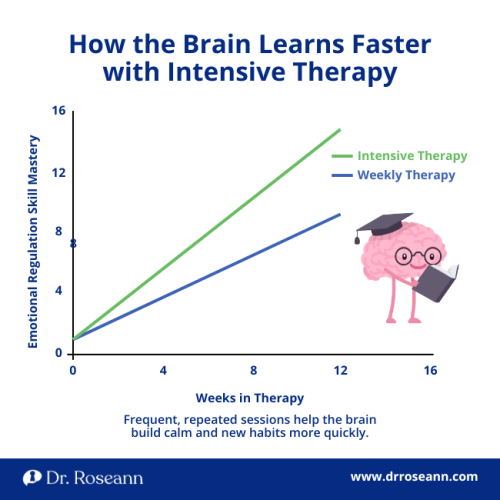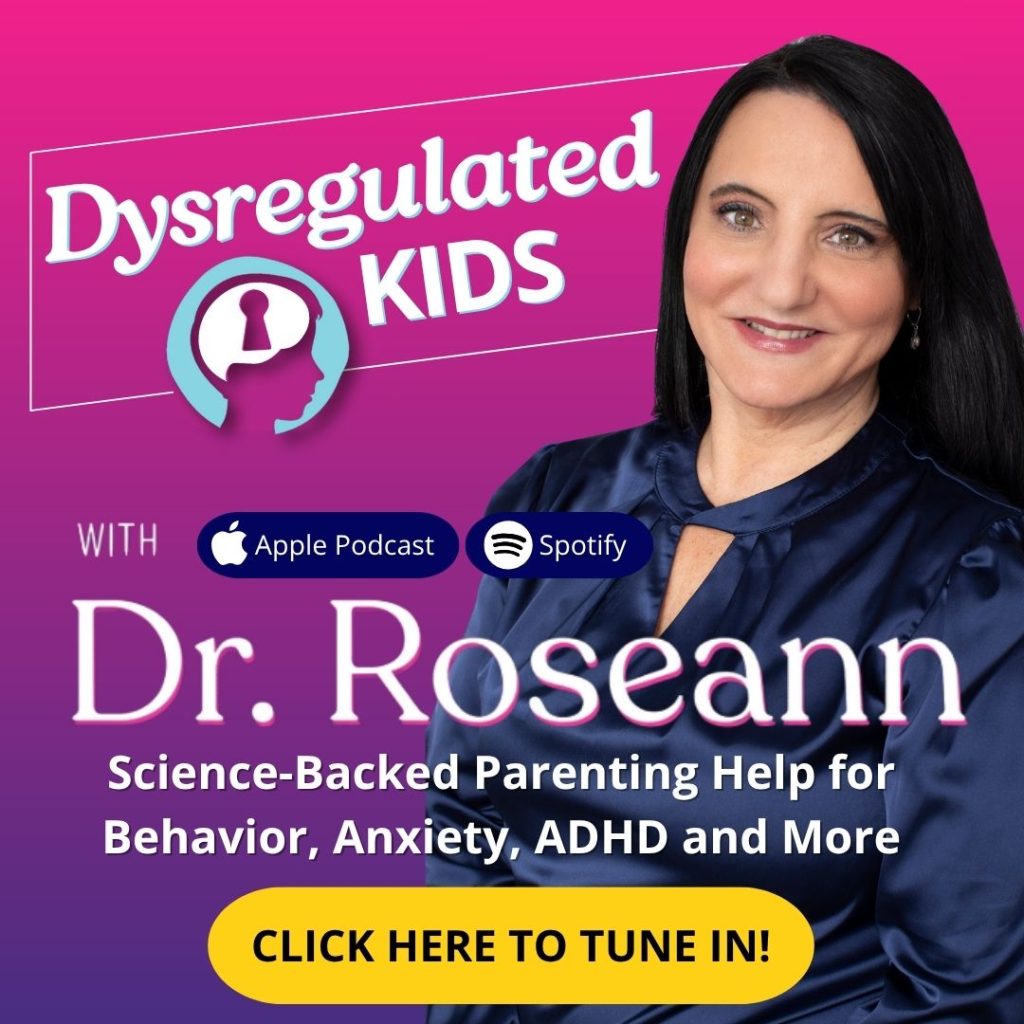Estimated reading time: 11 minutes
See how short-term Psychotherapy and CBT can calm your child’s brain—and turn daily meltdowns into steady progress.
If your child’s behavior feels out of control, you’re not failing. It’s a dysregulated brain, not bad parenting. When we calm the brain first, kids can learn new skills and use them at home and school.
In this guide, I explain how Psychotherapy and CBT work—especially in short, focused bursts. This is to help with anxiety, ADHD, OCD, mood issues, ASD, or PANS/PANDAS.
You’ll learn what to expect, how to choose the right format, and simple steps to start today.
What Problems Do Psychotherapy and Cbt Actually Help With in Kids?
Short answer: a lot. CBT for kids and integrative psychotherapy calm the brain and teach it new, healthy patterns. They help reduce anxiety, depression, OCD, trauma, and behavior struggles.
Psychotherapy and CBT also pair well with parent coaching and school collaboration.
What you’re likely to see
- Fewer meltdowns and smoother transitions
- Better sleep and morning routines
- More flexible thinking and problem-solving
Signs your child is a good fit
- Persistent worry, rituals, or avoidance
- Big reactions to small stressors
- School refusal or bedtime battles
- Stuck patterns despite “trying everything”
Parent example:
May’s 10-year-old had nightly anxiety spikes. Two weeks into CBT with a simple breathing routine and a “worry ladder,” bedtime dropped from 90 to 20 minutes.
Takeaway: small, repeated skills turn chaos into calm.
How Fast Can Short-Term Therapy Help a Dysregulated Child?
Faster than most parents expect. Intensive or short-term therapy programs front-load repetition, so skills “stick” sooner—like a brain training camp.
A 7-day cognitive therapy model for PTSD showed greater symptom reduction than supportive therapy, highlighting the power of concentrated care (Ehlers et al., 2014).
Concentrated ERP in the Bergen 4-Day OCD Treatment reported 83.1% response and 67.7% recovery at 12 months (Hansen et al., 2018).
Typical Timeline
- Week 1–2: Calm the nervous system; build coping basics
- Weeks 3–4: Exposure/practice; parent co-regulation scripts
- Weeks 4–8: Generalize skills to mornings, homework, and bedtime
Parent example:
Sam, 14, with school refusal, stalled in weekly therapy. In a 3-week intensive, he practiced graded exposures and used coping cards. By week three, he attended two classes daily.
Takeaway: dose matters.
What Does a Kid-Friendly CBT Session Look Like?
Think short steps, simple language, and lots of practice. Kids learn to notice thoughts, name feelings, and try new behaviors with coaching.
Inside a Session
- Check-in: “What felt hard? What went well?”
- Skill of the day: Thought detective, worry ladder, or coping card
- Practice: Micro-exposure or role-play with rewards
- Parent coaching: 5–10 minutes for co-regulation and home plans
Core CBT Tools (Quick Hits)
- Worry Ladder: Break one big fear into tiny steps.
- Coping Cards: One sentence. One skill. Quick win.
- Behavioral Activation: Small actions build mood and momentum.
- Reset Routine: Breath, movement, sensory input before problem-solving.
Philip C. Kendall, PhD: “These kids think. And how they think alters their behavior.”
(Kendall is a leading CBT-for-youth researcher and co-developer of the Coping Cat program.)
Parent example:
Luca, 8, froze during writing. Using “thought detective,” he caught the “I’ll mess up” story and tried a 2-minute sprint. Takeaway: tiny, repeated wins give new confidence.
How Is Intensive Therapy Different From Weekly Talk Therapy?
Intensive formats stack sessions over days or weeks for faster skill building. Weekly therapy is steady but may be too slow when a child is highly dysregulated.
Choosing the Right Fit
| Format | Best for | Frequency | Strength | Watch-outs |
|---|---|---|---|---|
| Weekly CBTMild–moderate symptoms; steady pace | Mild–moderate symptoms; steady pace | 1×/week | Habit building over time | Slow if arousal is high |
| Intensive Short-Term | High distress; stuck patterns; quick jump-start | Daily or several times/week for 2–4 weeks | Fast gains via repetition | Requires schedule commitment |
| Intensive Outpatient (IOP) | Teens needing peer practice & structure | 3–5 days/week, multi-hour | Coaching + real-life practice | Feels demanding at first |
In many families, Psychotherapy and CBT in a short-term, intensive format serve as a bridge from chaos to calm.

What if My Child Has OCD—Do We Need ERP?
Yes. ERP therapy is the gold standard for pediatric OCD and a core part of Psychotherapy and CBT for obsessive-compulsive symptoms.
International OCD Foundation: “Exposure and response prevention (ERP) therapy should always be considered as the first-line of treatment for children and adolescents with OCD.”
Why ERP Works
- Kids learn that anxiety rises and falls without rituals.
- The Bergen 4-Day format shows strong long-term outcomes and near-zero drop-out in some samples (Hansen et al., 2018).
Parent example:
Noah, 12, washed hands 30+ times nightly. With ERP, he touched a “medium-germ” object and delayed washing by 60 seconds. Two weeks later, rituals were cut in half.
Takeaway: small exposures build big courage.

Can Neurofeedback or Brain Mapping Boost CBT Results?
Often, yes. When the brain is calmer, CBT lands faster. Consider these brain-based supports when arousal is high or progress stalls:
- QEEG brain mapping: Guides care by showing patterns.
- Neurofeedback: Trains brainwaves toward stability so kids can access CBT and ERP more easily.
- Research suggests intensive neurofeedback can support regulation and reduce PTSD symptoms (Kluetsch et al., 2013), which may help kids engage in therapy more effectively. (Background support for regulation-first approach.)
Hansen et al. (Frontiers in Psychology, 2018): “The Bergen 4-day treatment is a feasible way to deliver treatment for OCD, and the effects are stable at 12-month follow-up.”
How to Choose the Right Therapist and Program Near You
Look for fit, format, and follow-through.
Quick Checklist
Hope Starts Here: Calming the Brain, Changing the Future
Parenting a dysregulated child can feel lonely, exhausting, and even scary at times — but you’re not alone. And it’s not your fault.
Every small step you take to calm your child’s brain helps them build resilience and confidence for life.
Start small. Repeat often. Celebrate every win. That’s how healing happens.
When we combine compassionate parenting with science-backed tools like Psychotherapy and CBT, kids don’t just cope — they grow. The brain learns calm, the heart reconnects, and your family finds its way back to peace.
Next step: Download our kid-friendly coping cards and watch a short co-regulation video. Try one tool tonight — because calm begins with the very first step you take together.
FAQs
How long before we see progress?
Some families notice calmer mornings in 1–2 weeks. Intensive formats can accelerate gains. Deep change builds with consistent practice.
Will CBT work if my child “won’t talk”?
Yes. We use games, drawings, movement, and micro-exposures. Skills come first; words catch up.
What if my child resists ERP?
We start tiny, pair with co-regulation, and reward efforts. Kids gain confidence quickly. The IOCDF also notes ERP is first-line for youth OCD.
Can CBT be combined with medication?
Yes. Many kids use both. Medication can lower distress, so CBT skills stick. Always consult your prescriber.
Terminology
CBT: Skills-based therapy that helps kids change unhelpful thoughts and behaviors.
ERP: CBT method for OCD where kids face fears in tiny steps without rituals.
Intensive therapy: Multiple sessions in a short window for faster learning.
QEEG: A brain map that guides care.
Neurofeedback: Brain training that supports calm and focus.
Citations
Abbass, A., Town, J., & Driessen, E. (2012). Intensive short-term dynamic psychotherapy: A systematic review and meta-analysis of outcome research. Harvard Review of Psychiatry, 20(2), 97–108. https://doi.org/10.3109/10673229.2012.677347
Ehlers, A., Hackmann, A., Grey, N., Wild, J., Liness, S., Albert, I., Deale, A., Stott, R., & Clark, D. M. (2014). A randomized controlled trial of 7-day intensive and standard weekly cognitive therapy for PTSD. American Journal of Psychiatry, 171(3), 294–304. https://doi.org/10.1176/appi.ajp.2013.13040552
Hansen, B., Hagen, K., Öst, L.-G., Solem, S., & Kvale, G. (2018). The Bergen 4-day OCD treatment delivered in a group setting: 12-month follow-up. Frontiers in Psychology, 9, 639. https://doi.org/10.3389/fpsyg.2018.00639
Always remember… “Calm Brain, Happy Family™”
Disclaimer: This article is not intended to give health advice, and it is recommended to consult with a physician before beginning any new wellness regimen. The effectiveness of diagnosis and treatment varies from patient to patient and condition to condition. Dr. Roseann Capanna-Hodge, LLC, does not guarantee specific results.
Are you looking for SOLUTIONS for your struggling child or teen?
Dr. Roseann and her team are all about science-backed solutions, so you are in the right place!
©Roseann Capanna-Hodge











